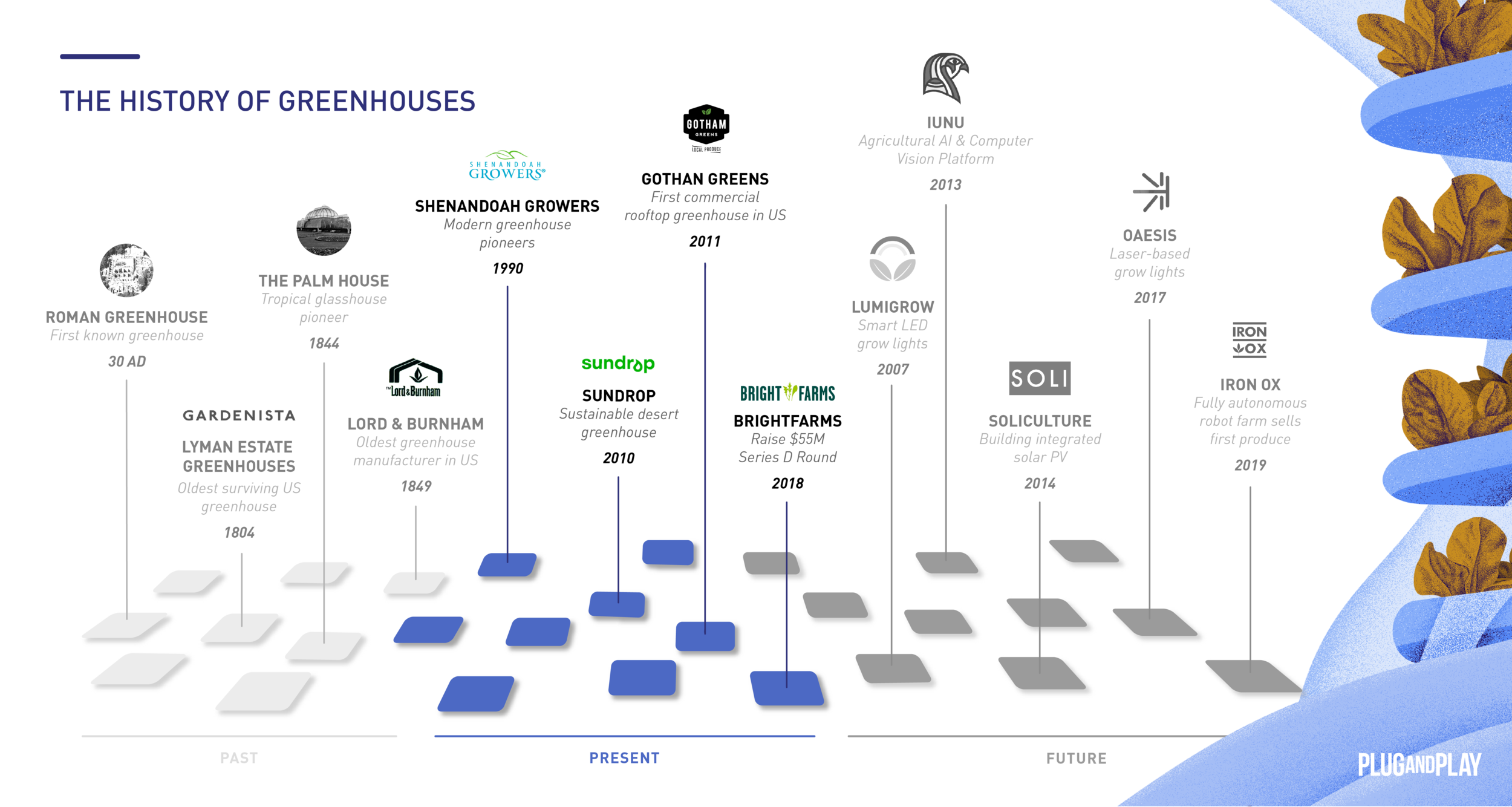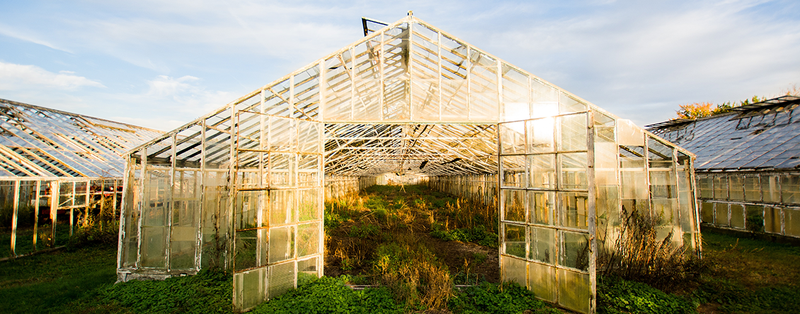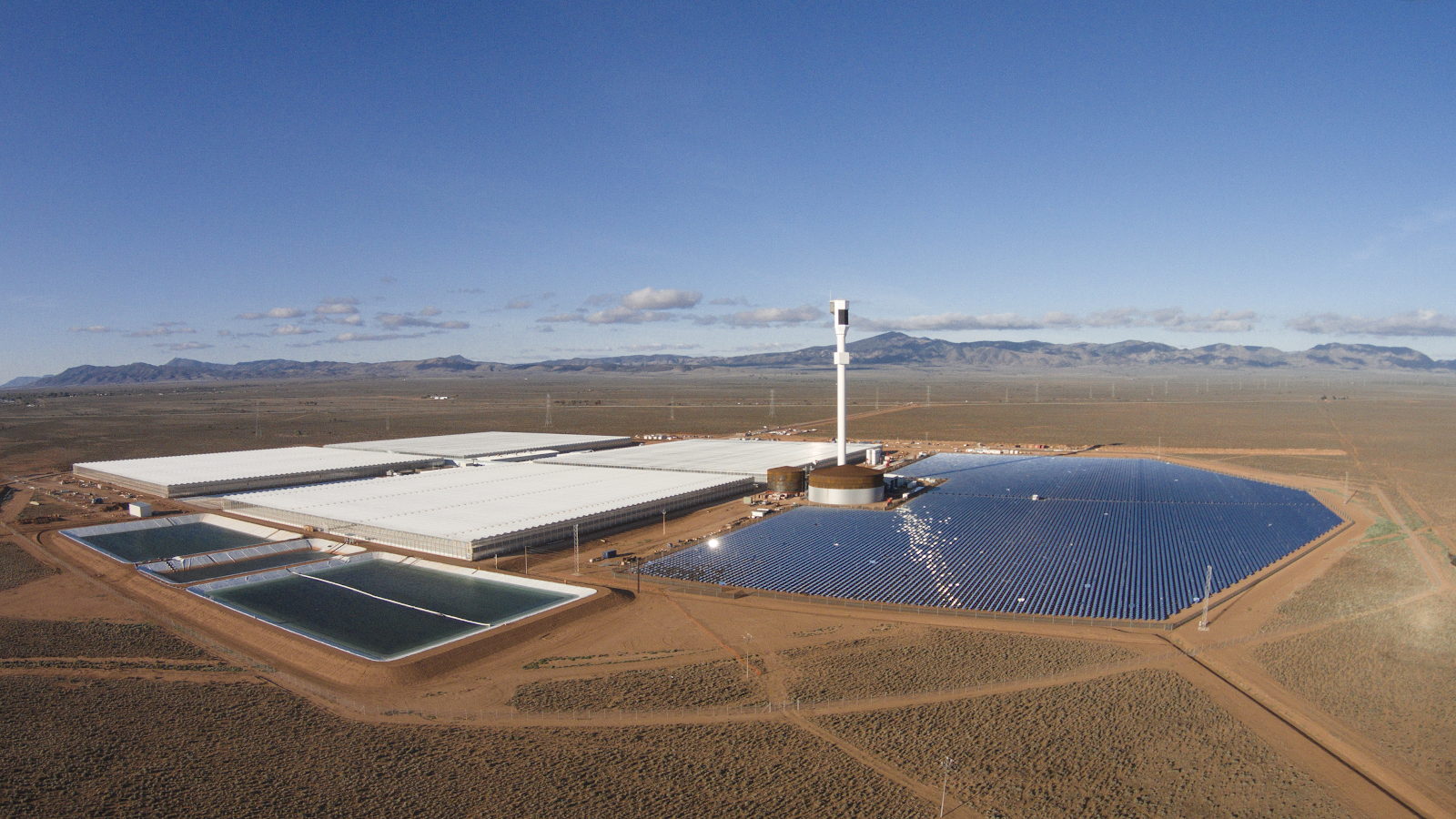May 17, 2019
Growing More With Less: The Past, Present, and Future of Greenhouses (Part 2)

Vertical farming has become an extremely popular topic as of late throughout the agriculture, technology, and investment arenas. No company showcases this recent craze for vertical farming more than Jeff Bezos-backed San Francisco-based Plenty, which in 2017 amazed the world with a record shattering $200 million in Series B funding. Over on the East Coast, other vertical farming companies such as AeroFarms and Bowery have also been generating large amounts of investment buzz from prominent chefs, tech giants, and venture capitalists.
But while vertical farming is currently at the center of attention, in the grand scheme of controlled environment agriculture it is still relatively small compared to the dominant industry: Greenhouse. In fact, almost all of the technologies that vertical farms now use to grow crops indoors, from hydroponic irrigation to smart sensors and automation, have been and continue to be developed by and for the greenhouse industry. How else did you think that the Netherlands is second only to the US in terms of total food exports.
Greenhouses have also been around for a lot longer than vertical farms—millennia in fact! They are therefore the perfect subject for this 3-part mini-series by Agritecture & Plug and Play that provides an overview of the greenhouse industry: past, present and future.
In Part 1 of this series we discussed the origins of greenhouses, from their inception during Roman times to their widespread adaptation by wealthy estates during the Renaissance to their eventual use as a food source on isolated islands during the second World War. If you missed Part 1, not to worry, you can read all about the history of greenhouses HERE.
Now that we’ve covered how greenhouses began, let’s dive right into the current state of the industry today.
Where are we now?
In recent decades, the Greenhouse industry has been transforming from small scale facilities used primarily for research and aesthetic purposes (i.e. botanic gardens) to significantly more large-scale facilities that compete directly with land-based conventional food production.
Combined, the entire global greenhouse market currently produces nearly US $350 billion in vegetables annually, of which U.S. production comprises less than one percent.
Nowadays, in large part due to the tremendous recent improvements in growing technology, the industry is witnessing a blossoming like no time before. Greenhouses today are increasingly emerging that are large-scale, capital-infused, and urban-centered.
A major part of this recent transformation in the greenhouse industry has been the rise of a technology-infused Smart Greenhouse Market. Smart Greenhouses feature new levels of technology and control that allow for further optimization of growing conditions. These technologies include LED grow-lights that provide energy efficient supplemental lighting during cloudy conditions and at night, as well as an array of smart sensors that can detect issues with plants or the growing environment as they arise and trigger responses from different control systems.

Globally, the majority of ‘smart greenhouses’ are located in Western Europe and North America, although other locations such as the GCC and Asia have rapidly growing markets. Since most smart greenhouses do not depend on arable land and fertile soil like traditional farming, they maintain a distinct advantage of being able to locate in regions where farming was up until recently impractical from a financial or resources point of view, or simply not feasible.
No matter the country or region, however, one universal trend is that modern greenhouses are moving closer to metropolitan areas and large transportation hubs. One reason for this shift is to locate closer to universities where research opportunities and skilled-labor abound. As greenhouses become more tech-heavy, having this close proximity to research institutions will continue to be an important factor in location.
The largest reason, however, for this influx of greenhouses towards urban areas is to be significantly closer to the consumer base. The local food market in the U.S. alone has grown from a $5 billion annual market in 2008 to a $20 billion market as of this year, and studies show that retailers are failing to keep up with the growing demand. Greenhouses, unlike outdoor farms in most locations, are able to produce a constant supply of local food year-round, making them an ideal supplier to meet the local food market’s demand.
BrightFarms, which operates large-scale greenhouses in Ohio, Virginia, Pennsylvania and Illinois, is a great example of this current trend.
“BrightFarms is taking ‘local’ National; we’re taking something that was previously small, fragmented, and seasonal - (local produce) - into something that can be accessible, scalable, and available year round at your supermarket,” says Marissa Arguelles, Senior Brand Manager.
“Our network of multiple farms and nimble process allows us to constantly trial and innovate with new things. Plus, the safety of CEA combined with a short, transparent supply chain is exactly what consumers, customers, and the industry needs.”

Rendering of a BrightFarms greenhouse. Salad greens grow on floating rafts in a hydroponic system. | Source: BrightFarms
Not only does BrightFarms take advantage of their relatively unique ability to grow large amounts of fresh produce right next to the consumer, they also maintain long-term fixed-price contracts with retailers to secure upfront capital and ensure a continued market for their product. This business model has been instrumental is BrightFarms’ success and continued expansion.
In fact, access to significant upfront capital and the ability to scale has not only been a reason for BrightFarms’ success: they are defining factors across the modern greenhouse industry. And, naturally, the two are inextricably linked. Scaling is only possible with the upfront capital necessary to build more greenhouses, which have also become increasingly expensive due to the incorporation of ever-more sophisticated climate control and automation systems.
Shenandoah Growers, similar to BrightFarms, is another example of how capital infusion, scaling, and strategically placing their growing infrastructure near urban hubs has led to high levels of success in the modern, high-tech greenhouse industry. Thanks in large part to this strategy, the company has become the leading U.S. grower of fresh, certified organic herbs for retail today.
Shenandoah Growers have also been a leading adopter of new growing technologies. Thanks to their integrated high-tech greenhouse and vertical farming model, the company is able to harness the advantages of vertical farming to maximize production of early stage crops, which are then transplanted at the appropriate stage to their co-located greenhouse facility. The company partnered with Fluence Bioengineering in 2016 to update their greenhouses and vertical farms with state-of-the-art LED lighting systems.

Shenandoah integrated Greenhouse and Vertical Farm facilities with recently installed LED grow-lights. | Source: Fluence
Locating near cities, however, does not mean that all modern greenhouses are becoming similar to one another. In fact, the local climate for any particular greenhouse still plays a major factor in dictating the technologies and processes used. Every greenhouse has to function within the context of its local environment to create the ideal microclimate for growing crops, and to use available resources efficiently.
Take Saudi Arabia, for example, where greenhouses are being increasingly encouraged as a way to achieve regional food security and reduce the stress on local water resources. Greenhouses there receive plenty of sunlight, but moisture levels and temperature control is a constant issue due to the region’s hot and humid climate.
The Netherlands, on the other hand, have the disadvantage of not having enough sunlight and also a relatively cold climate for most of the year. As a result, greenhouses in the Netherlands have become leaders in lighting technology as well as recovering waste-heat and CO2 from nearby facilities to warm their farms and boost plant growth.
Greenhouse companies across the world, such as Sundrop Farms in Port Augusta, Australia, are continually innovating new technologies that allow us to grow food in places where conventional production is either not practical or feasible, and very often with less reliance on the finite resources that conventional agriculture traditionally requires.
.png)
Sundrop Farms’ greenhouse facility in South Australia. Solar energy generated on site is used to power the facility, and a thermal desalination plant converts seawater from the nearby Spencer Gulf into freshwater for crops. The facility is expected to produce at least 15,000 tonnes of truss tomatoes a year. | Source: AgFunder
From now into the future
In the last century, greenhouses have transformed from a research curiosity into a critical component of global food production. From The Netherlands to Spain to Ontario, modern greenhouses have allowed producers around the world to grow a consistent product year-round using significantly less resources on a plant-by-plant basis than conventional production.
As the market has grown dramatically, it has also experienced clear trends in recent years. Modern greenhouse are becoming increasingly tech-heavy, using LED lights and automated control systems to perfectly tailor the growing environment. Successful greenhouse companies are scaling significantly and located their growing facilities near urban hubs to capitalize on the ever increasing demand for local food, no matter the season. To accomplish these feats, the greenhouse industry is also becoming increasingly capital-infused, using venture funding and other sources to build out the infrastructure necessary to compete in the current market.
As the smart greenhouse market continues to expand, new technologies are also coming online that will shape the future of production. Like before, many of these technologies are being developed internally for the greenhouse industry in particular. However, perhaps recently more than ever, innovation is also coming from other sectors. From artificial intelligence to Solar PV, new technologies from a wide range of industries are now finding their way into the modern greenhouse.
Check out Part 3: Growing More With Less, where we discuss some of the leading companies and technologies that are paving the way for the future of smart greenhouse production.
BROUGHT TO YOU BY:


About Agritecture
Founded in 2014, Agritecture is an urban agriculture consulting firm based out of New York City that has worked with over 80 entrepreneurs, companies, and organizations across the globe to turn their farming concepts into reality. Agritecture’s unique team of interdisciplinary consultants, led by industry thought-leader Henry Gordon-Smith, enables us to provide our clients with the tools, data, knowledge, and network to ensure their long-term success. In addition to consulting, Agritecture is well known for its popular urban agriculture blog and curated events that promote honest conversations and build connections across sectors and industries, including the annual AgLanta Conference and our custom Agritecture Design Workshops.
Please visit our website for more information, and don’t hesitate to CONTACT US today!
About Plug and Play
Plug and Play is a global innovation platform. Headquartered in Silicon Valley, we have built accelerator programs, corporate innovation services, and an in-house VC to make technological advancement progress faster than ever before. Since inception in 2006, our programs have expanded worldwide to include a presence in over 20 locations globally giving startups the necessary resources to succeed in Silicon Valley and beyond. With over 10,000 startups and 280 official corporate partners, we have created the ultimate startup ecosystem in many industries. We provide active investments with 200 leading Silicon Valley VCs, and host more than 700 networking events per year. Companies in our community have raised over $7 billion in funding, with successful portfolio exits including Danger, Dropbox, Lending Club, and PayPal.
For more information, visit http://plugandplaytechcenter.com.
